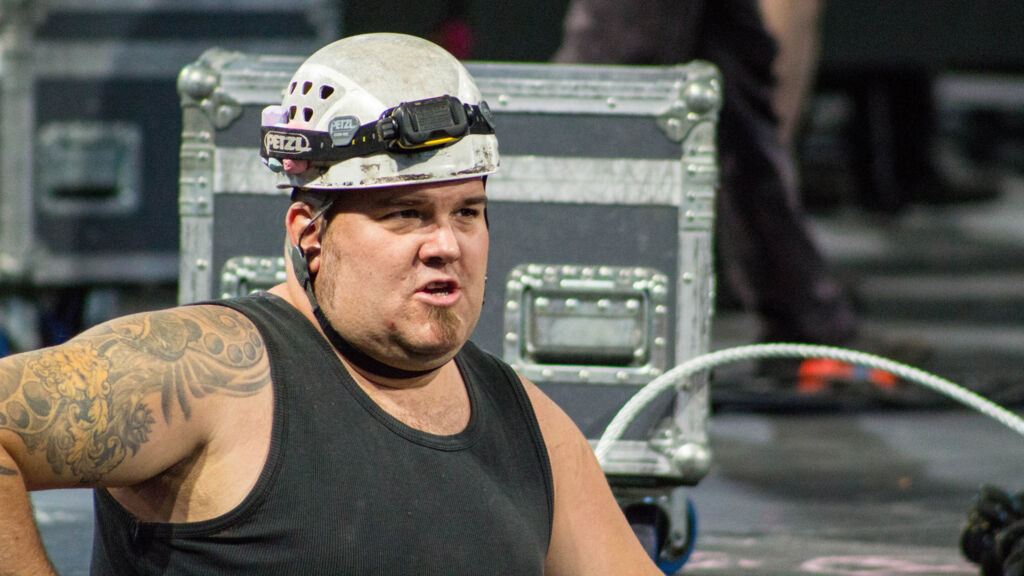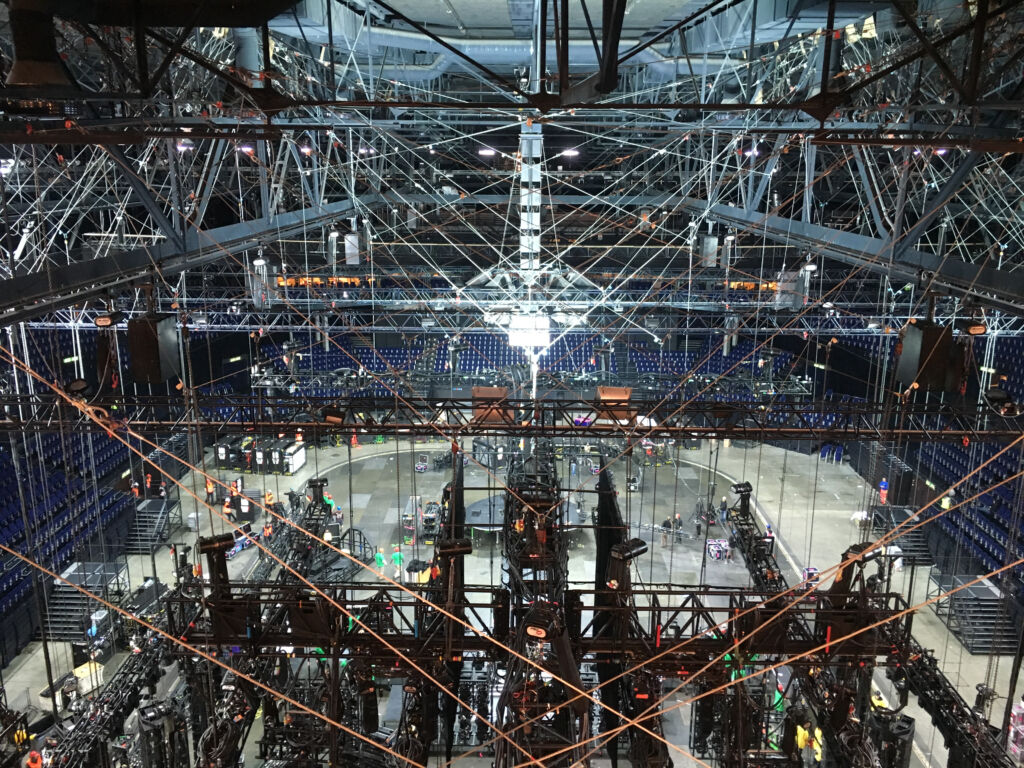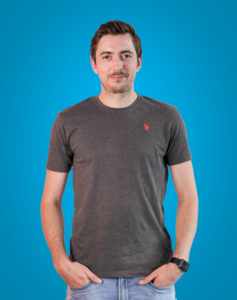They move around at dizzying heights and ensure the safe assembly and dismantling of traverses, video walls and sound systems at events. Without them, there would be no spectacular sets. No breathtaking light shows. Yet they always remain in the background. Who are these silent workers? We asked Daniel Cescato, Head Rigger.
Daniel tells me he had to think twice about whether he should agree to this blog article. He is a big man who is reluctant to make a fuss about himself. He has been working for Habegger for 15 years. Very few people have been with us longer than that. Yet you hardly ever seen the man from Toggenburg in Regensdorf. If he isn’t at an event, he’s coordinating and planning the next assignments from home. He doesn’t have a workplace at the headquarters. Intentionally so. “I’m actually a company within the company,” says Daniel with a smile. Together with his colleague Ruben Fischer, he handles all of the rigging orders independently – smoothly and always to the full satisfaction of the client.

For 15 years, Daniel has put his heart and soul into his work as a rigger.
A close-knit group
In most cases, the clients are renowned event organisers who put on shows in the Hallenstadion, for which Habegger holds the rigging contract. “My second living room,” as Daniel calls it. The work usually begins several weeks before the actual event. The organiser sends him the rough plans with the sound, lighting and video setup. His job is to adapt this to the Hallenstadion, define suspension points and calculate assumed loads. Once this has been approved by the organiser, production and the structural engineers, the riggers need to be booked. A relatively small professional group in Switzerland, but one with a world-class reputation. There are only 20 trained riggers – almost all of them freelancers. A mixed crowd, from industrial steeplejacks to mountain guides. “We are all friends outside work as well. But that’s also important, we spend a great deal of time together due to the unconventional working hours and need to be able to trust one another,” explains Daniel, who is also a trained cook.
The right person in the right place.
Rock & roll at over 20 metres
When Daniel began rigging 15 years ago, there was still no training programme. At the time, he was working full-time as a sound and lighting engineer, and bought his first belt there and then to gain a foothold as a rigger. He later completed a 5-week rigging course in Germany. His first job was a Joe Cocker concert in Basel. “Rock & roll”, as he calls it, has fascinated him ever since. The riggers begin the assembly work at 4 am. This means: Hoisting up to 140 motors, each weighing 50-80 kilograms, into the roof. Working 20 metres above the ground. A head for heights and strength training included. While his colleague Ruben likes to work up in the roof, Daniel prefers a coordinative role on the ground: “The right person in the right place.”
One rigger is not a rigger
Daniel has never had any accidents. “Nothing can happen if you keep to the rules,” explains the 45-year-old. A rigger is always secured and the “four-eyes principle” applies. The motto is: one rigger is not a rigger. So you never work in the roof alone. If a fall should happen nevertheless, the casualty has to be got down to the ground within 15 minutes to prevent them from suffering any lasting damage from the safety harness. All riggers are trained in this kind of rescue. “Rigging is teamwork,” Daniel sums it up.
Fast in, fast out
After the concert, when the audience streams out of the hall at 10 pm, dismantling work begins for the riggers. Very little time is usually available for this. The stars’ tours run on a tight schedule. Today Zurich, tomorrow Vienna. “We run around for two hours, sweat drips from the roof – that’s absolutely my world,” says Daniel, enthusiastically. One highlight, he says, was the AC/DC concert 10 years ago, when 34 semitrailers full of material left the stadium within 1.5 hours.
View upward
Daniel rarely watches the concerts themselves. He usually only enjoys the last few minutes. “40,000 people with lighters. That’s my satisfaction. The reward for my work,” he says modestly. Sometimes stars also thank him, like Bruce Springsteen. That’s nice, Daniel says. Most of the audience only notice the light, the sound and the video. The riggers’ work mostly stays in the dark. “In a hall, I always look up at the roof first. It would make me proud if the visitors also did the same in future.”

The view upwards is worthwhile, as here during rigging for the Madonna concert in 2015.

Daniel Cescato, Head Rigger

Ruben Fischer, Senior Expert Rigging
